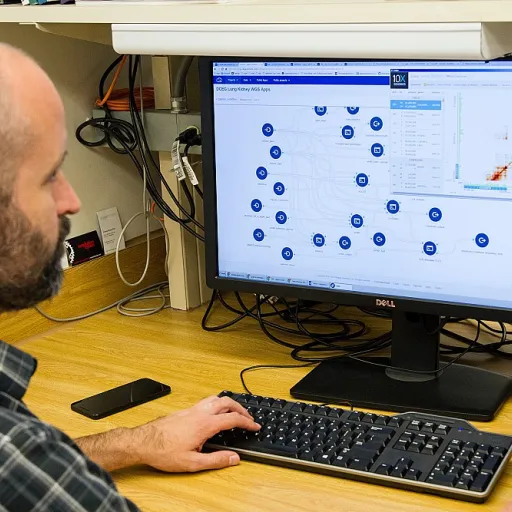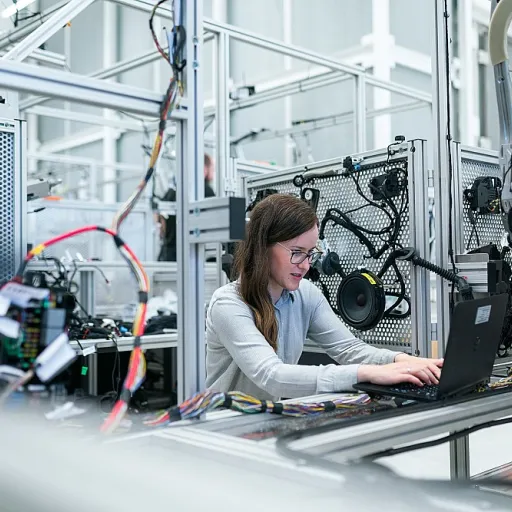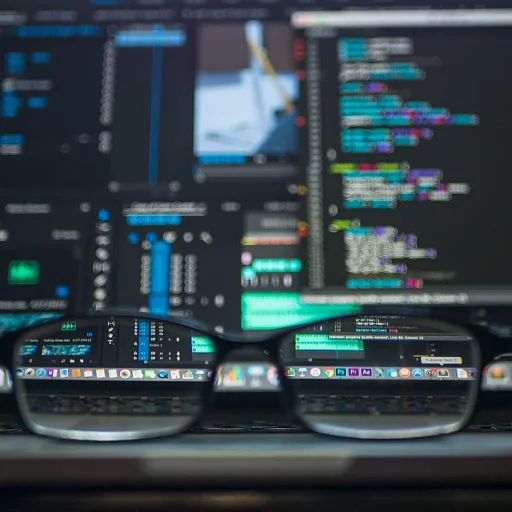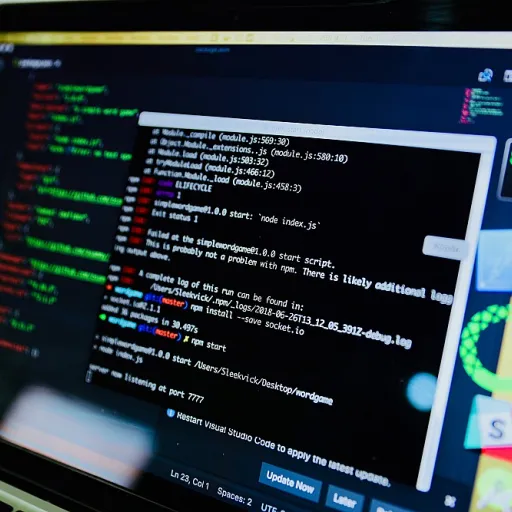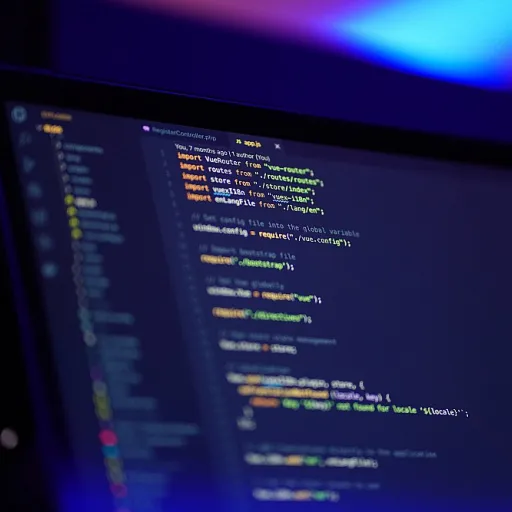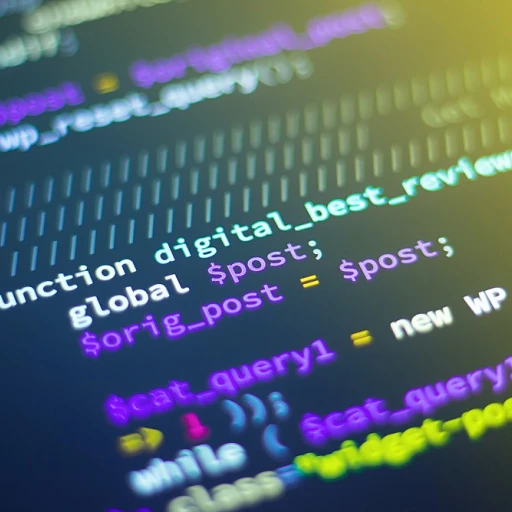
Understanding AI's Role in Cybersecurity
The Role of AI in Modern Cybersecurity
In the ever-evolving landscape of cybersecurity, artificial intelligence (AI) has emerged as a pivotal player. As cyber threats become increasingly sophisticated, the need for advanced tools to combat these threats has never been more critical. AI, with its ability to process vast amounts of data and identify patterns, offers a strategic advantage in threat detection and response.
AI-powered systems are designed to enhance the capabilities of cybersecurity professionals by automating routine tasks and providing insights that might be missed by human analysts. These systems utilize machine learning algorithms to continuously improve their threat detection capabilities, adapting to new threats as they emerge. This not only increases the efficiency of cybersecurity operations but also allows human experts to focus on more complex tasks that require human judgment and expertise.
While AI offers significant advantages, it is not without its limitations. The integration of AI in cybersecurity requires careful consideration of the balance between automated systems and human oversight. The partnership between AI and human expertise is essential to ensure that cybersecurity measures are both effective and adaptable to the ever-changing threat landscape.
For those interested in exploring the capabilities of AI in cybersecurity further, a deep dive into software monitoring tools can provide valuable insights into how AI is being leveraged in real-world applications.
The Strengths of AI in Cyber Defense
AI-Powered Defense Mechanisms
Artificial intelligence has become a cornerstone in the realm of cybersecurity, offering a range of tools and systems that enhance threat detection and response. AI's ability to process vast amounts of data quickly and accurately makes it an invaluable asset in identifying potential cyber threats. By leveraging machine learning algorithms, AI can analyze patterns and detect anomalies that might indicate a security breach.
Automated Threat Detection
One of the most significant strengths of AI in cyber defense is its capacity for automated threat detection. Unlike traditional methods that rely heavily on human oversight, AI systems can continuously monitor network traffic and flag suspicious activities in real-time. This capability not only speeds up the detection process but also reduces the likelihood of human error, ensuring a more robust security posture.
Efficiency in Routine Tasks
AI excels in handling routine tasks that would otherwise consume valuable time and resources for cybersecurity professionals. Tasks such as log analysis and incident response can be automated, allowing human experts to focus on more strategic aspects of cybersecurity. This shift not only enhances efficiency but also empowers cybersecurity professionals to develop and refine their skills in more complex areas.
Enhancing Human Expertise
While AI offers numerous advantages, it is essential to recognize that it complements rather than replaces human expertise. The strategic insights and judgment that human analysts bring to the table are irreplaceable. AI can provide the data and initial analysis, but human judgment is crucial for making informed decisions and developing comprehensive security strategies. This partnership between AI and human expertise is vital for addressing the ever-evolving landscape of cyber threats.
For more insights on how AI is revolutionizing cybersecurity, you can explore this detailed analysis.
Limitations of AI in Cybersecurity
Challenges in AI-Driven Cybersecurity
While artificial intelligence (AI) has made significant strides in enhancing cybersecurity, it is not without its limitations. Understanding these constraints is crucial for developing a balanced approach to cyber defense. AI systems, though powerful, are not infallible and require careful integration with human expertise to effectively counter cyber threats.
One of the primary limitations of AI in cybersecurity is its reliance on data. AI-powered tools and machine learning algorithms require vast amounts of data to function effectively. However, the quality and relevance of this data can significantly impact the accuracy of threat detection. Inaccurate or biased data can lead to false positives or negatives, potentially leaving systems vulnerable to attacks.
Moreover, AI lacks the human judgment necessary to understand the broader context of a cyber threat. While AI can efficiently handle routine tasks and automated threat detection, it struggles with strategic decision-making that requires a nuanced understanding of complex situations. This is where the role of cybersecurity professionals becomes indispensable. Human experts bring critical thinking and contextual awareness that AI cannot replicate.
Another challenge is the adaptability of cyber threats. Cybercriminals are continually evolving their tactics, and AI systems must be constantly updated to keep pace. This requires ongoing human oversight to ensure that AI tools remain effective against new and emerging threats. Additionally, AI's dependency on predefined algorithms means it can be predictable, making it susceptible to manipulation by savvy attackers.
Finally, the integration of AI into cybersecurity raises concerns about the potential loss of cybersecurity jobs. While AI can enhance efficiency, it cannot replace the need for skilled cybersecurity professionals. The future of cybersecurity will likely see a partnership between AI and human analysts, where AI handles data-intensive tasks, and humans focus on strategic threat analysis and incident response.
In conclusion, while AI offers promising advancements in cyber defense, it is not a standalone solution. A collaborative approach that leverages both AI and human expertise is essential for building robust and resilient cybersecurity systems. For those interested in exploring how AI and human skills can complement each other in different sectors, consider reading about inspiring journeys in cloud migration.
Human Expertise vs. AI: A Necessary Partnership
The Balance Between Human Expertise and AI
In the evolving landscape of cybersecurity, the collaboration between human expertise and artificial intelligence is not just beneficial but essential. While AI-powered tools excel in routine tasks such as automated threat detection and log analysis, they lack the nuanced understanding and strategic thinking that human professionals bring to the table.
AI systems are adept at processing vast amounts of data quickly, identifying patterns, and flagging potential cyber threats. However, the interpretation of these patterns and the subsequent decision-making process require human judgment. Cybersecurity professionals possess the critical skills needed to assess the context of threats, prioritize them, and devise appropriate incident response strategies.
Human Oversight in AI-Driven Security
Despite the impressive capabilities of machine learning algorithms, human oversight remains crucial. AI can detect anomalies and potential attacks, but it is the human experts who evaluate the severity and implications of these threats. This partnership ensures that cybersecurity measures are not only reactive but also proactive, adapting to the ever-changing threat landscape.
Moreover, cybersecurity jobs are evolving rather than being replaced. The demand for cybersecurity expertise is growing, with professionals required to manage and refine AI tools, ensuring they align with organizational goals and ethical standards. According to labor statistics, the need for skilled analysts and security experts will continue to rise as cyber threats become more sophisticated.
Strategic Integration of AI and Human Skills
For future cybersecurity, the strategic integration of AI and human skills will be pivotal. While AI can handle the heavy lifting of data processing and threat detection, human professionals will focus on strategic planning, threat assessment, and incident response. This synergy not only enhances the effectiveness of cybersecurity measures but also ensures that human expertise remains at the forefront of defending against cyber attacks.
Future Trends: AI and Cybersecurity
Emerging Trends in AI-Driven Cybersecurity
The future of cybersecurity is increasingly intertwined with the capabilities of artificial intelligence. As cyber threats evolve, so too must the tools and strategies used to combat them. AI is poised to play a pivotal role in this ongoing battle, offering both opportunities and challenges for cybersecurity professionals.
AI-Powered Threat Detection and Response
One of the most promising trends is the use of AI for threat detection and incident response. Machine learning algorithms can analyze vast amounts of data to identify patterns and anomalies that may indicate a cyber attack. This automated threat detection allows for quicker responses, potentially mitigating damage before it escalates. However, the effectiveness of these systems relies heavily on the quality of the data they are trained on and the continuous oversight of human experts.
Enhancing Human Expertise with AI
While AI can handle routine tasks and analyze large datasets more efficiently than humans, it cannot replace the nuanced judgment and strategic thinking of cybersecurity professionals. Human oversight remains crucial, particularly in complex scenarios where ethical considerations and creative problem-solving are required. The partnership between AI and human expertise will be essential in developing robust cybersecurity strategies.
AI and the Future of Cybersecurity Jobs
As AI becomes more integrated into cybersecurity systems, the demand for professionals with both technical and analytical skills will grow. Cybersecurity jobs will increasingly require knowledge of AI tools and techniques, as well as the ability to interpret and act on AI-generated insights. This shift will necessitate ongoing education and training for current and future cybersecurity professionals.
Challenges and Considerations
Despite its potential, AI in cybersecurity is not without limitations. Issues such as bias in learning algorithms, the need for continuous data updates, and the risk of AI systems being targeted by cyber attacks themselves must be addressed. Furthermore, the reliance on AI could lead to complacency, making human judgment and oversight more important than ever.
In conclusion, the future of cybersecurity will be shaped by the strategic integration of AI and human expertise. As AI tools continue to evolve, they will enhance the capabilities of cybersecurity systems, but the role of human professionals will remain indispensable in navigating the complexities of cyber threats.
Real-World Applications and Case Studies
AI-Powered Threat Detection in Practice
In the realm of cybersecurity, AI has become a formidable ally in identifying and mitigating cyber threats. One of the most significant applications is in threat detection, where machine learning algorithms analyze vast amounts of data to identify patterns indicative of potential attacks. These systems can process information at speeds far beyond human capabilities, allowing for rapid response to emerging threats.
Automated Incident Response Systems
AI-driven tools are increasingly being used to automate routine tasks in incident response. By leveraging AI, organizations can streamline their processes, reducing the time it takes to address security incidents. This automation not only enhances efficiency but also allows cybersecurity professionals to focus on more strategic tasks that require human judgment and expertise.
Enhancing Human Expertise with AI
While AI offers powerful tools for cybersecurity, it is not a replacement for human experts. Instead, it complements their skills by handling data-intensive tasks such as log analysis and threat detection. Human oversight remains crucial, as professionals interpret AI-generated insights and make strategic decisions based on their expertise. This partnership between AI and human analysts is essential for effective cybersecurity.
Real-World Case Studies
Several organizations have successfully integrated AI into their cybersecurity frameworks. For instance, financial institutions use AI to detect fraudulent activities by analyzing transaction patterns. Similarly, healthcare providers employ AI systems to protect sensitive patient data from cyber threats. These real-world applications demonstrate the potential of AI to enhance cybersecurity while highlighting the ongoing need for skilled cybersecurity professionals to manage and interpret AI outputs.
Future Cybersecurity Trends
As AI continues to evolve, its role in cybersecurity will expand. Future trends suggest a growing reliance on AI for proactive threat detection and response. However, the need for human expertise will persist, as AI systems require continuous monitoring and refinement. The collaboration between AI and cybersecurity professionals will be pivotal in addressing the complex challenges posed by evolving cyber threats.






